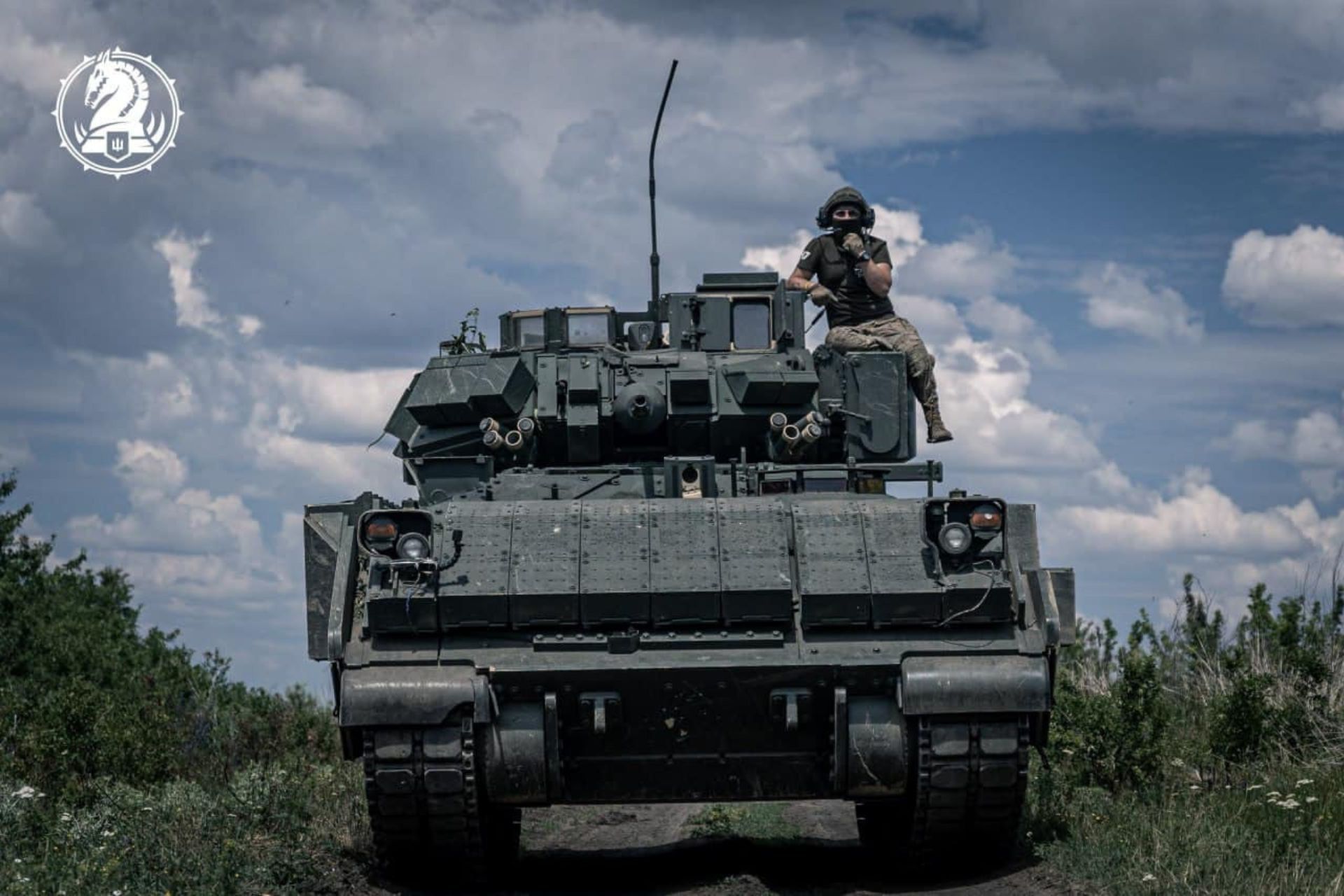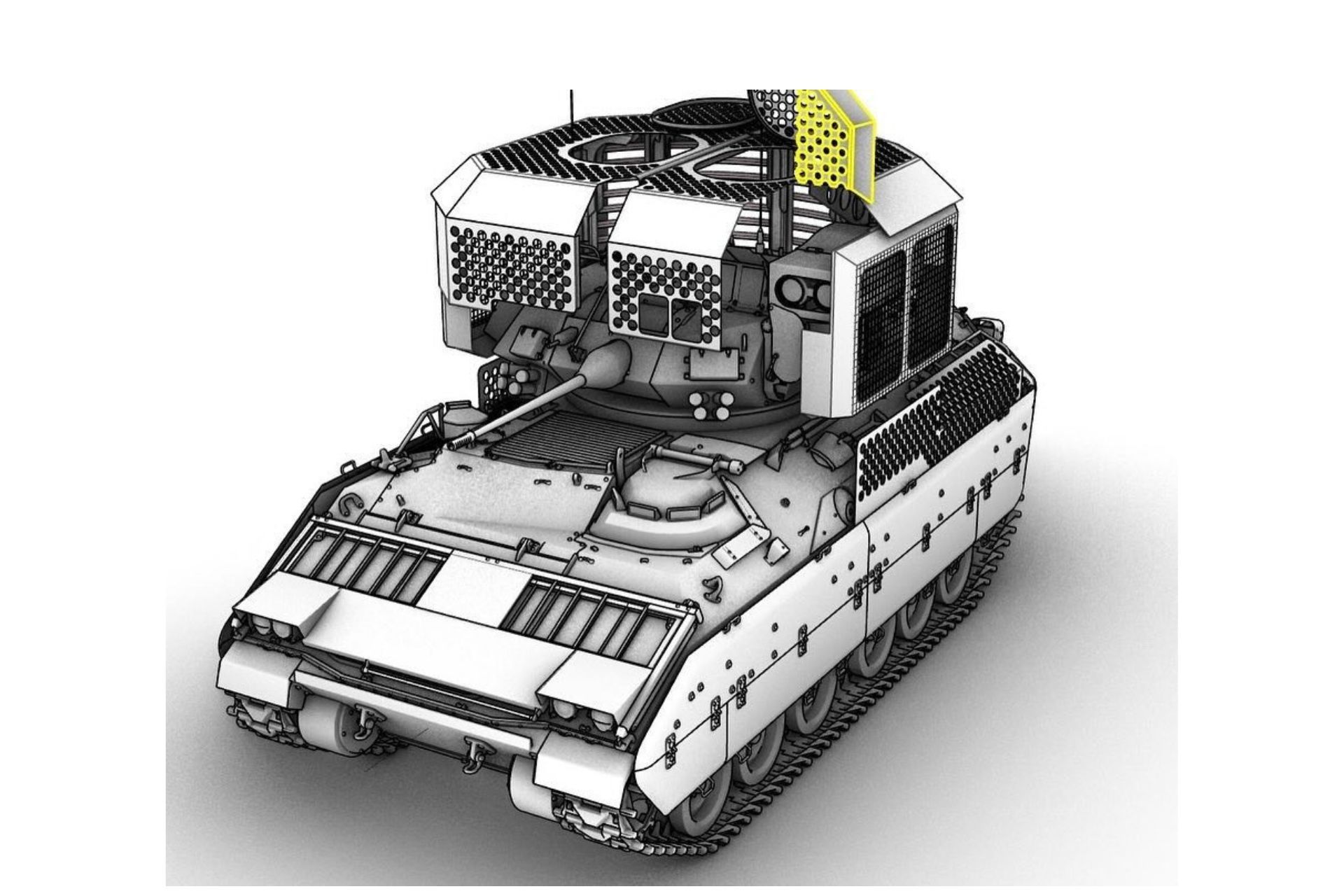Breaking News
Ukrainian Army Considers Equipping M2A2 Bradleys with Anti-Drone Cages to Counter Aerial Threats.
The war in Ukraine has highlighted the importance of infantry fighting vehicles (IFVs) in modern conflicts. Among these, the M2A2 Bradley, provided by the United States, plays a crucial role for the Ukrainian 47th Mechanized Brigade. Faced with the growing threat of drones, particularly First Person View (FPV) drones, Ukrainian soldiers are considering equipping their Bradleys with anti-drone cages. This adaptation aims to enhance the protection of these vehicles without compromising their operational effectiveness.
Follow Army Recognition on Google News at this link

Since the start of the conflict, Ukraine has received over 300 Bradley vehicles, with around 100 deployed by the 47th Mechanized Brigade (Picture source: 47th Mechanized Brigade)
The M2A2 Bradley is a versatile infantry fighting vehicle designed to transport up to 10 soldiers (three crew members and seven infantry) while offering significant protection and fire support. It is equipped with a 25 mm M242 Bushmaster automatic cannon capable of firing armor-piercing and explosive rounds, as well as two TOW missile launchers for long-range anti-tank engagements. The vehicle also features a coaxial 7.62 mm M240C machine gun. In terms of protection, the M2A2 Bradley benefits from reactive armor, enhancing its resistance to RPGs and anti-tank weapons, and its armor has been strengthened to withstand artillery shrapnel and armor-piercing rounds. Its tracked mobility allows it to traverse difficult terrains, and it is equipped with NBC (nuclear, biological, chemical) protection, enabling it to operate in contaminated environments.
Since the start of the conflict, Ukraine has received over 300 Bradley vehicles, with around 100 deployed by the 47th Mechanized Brigade. This elite brigade, trained to NATO standards, has been at the forefront of major counteroffensives. The Bradleys have provided a balanced combination of mobility, firepower, and protection, allowing troops to conduct both offensive and defensive operations effectively.
The Drone Threat in the Ukrainian Conflict
With advancements in technology, drones have become an essential tool in modern warfare. In Ukraine, FPV drones have been widely used for reconnaissance, artillery spotting, and direct attacks. These drones, often equipped with explosives, pose a significant threat to armored vehicles and ground troops.
FPV drones, operated in real-time, can navigate complex terrain and strike with precision. Their relatively low cost and ease of acquisition make them a favored tool for disrupting enemy operations. Although robust, Bradleys are not immune to these aerial threats.
360° View of the Anti-Drone Cage Project on a Bradley M2A2 of the 47th Mechanized Brigade (Picture source: iron_nuts_ua)
Adaptation and Innovation by Ukrainian Soldiers
In response to this growing threat, Ukrainian soldiers have had to adapt quickly. Inspired by solutions already observed, particularly on the Russian side with "Turtle Tanks," they are now considering equipping their Bradleys with anti-drone cages. These metal structures, mounted on the roof and other vulnerable parts of the vehicle, are designed to detonate drone-carried explosives before they can reach the main armor.
This approach is not entirely new. Russian forces have previously installed similar cages on their combat tanks, although their effectiveness has been mixed. These cages, often referred to as "grill shields," were primarily intended to protect against anti-tank missiles with shaped charges. However, they frequently hindered turret mobility and obstructed sensors, reducing the operational effectiveness of the tanks.
The Bradleys equipped with anti-drone cages appear to have addressed some of these limitations. Images provided by the Iron Nuts group show a design that slightly increases the vehicle's height without restricting turret rotation. Sensors and weapon systems remain functional, allowing the crew to maintain combat effectiveness. These images reveal substantial modifications to the Bradley, including the addition of anti-drone cages over the turret and around sensitive areas of the vehicle.
These metal cages aim to protect the vehicle from drone attacks, particularly FPV drones, by intercepting or detonating explosives before they can reach the vehicle. There are also reinforcements around the sensors to protect them while maintaining their functionality, although this could slightly reduce their effectiveness. The Bradley's height has increased due to these additions, potentially compromising its battlefield concealment. Additional plates also seem to have been installed on the sides to enhance lateral protection against projectiles. These modifications represent efforts to adapt the Bradley to modern threats while presenting potential challenges related to the vehicle's mobility and overall effectiveness.
Impact on Vehicle Performance
While these cages offer additional protection, it is essential to evaluate their impact on Bradley's performance. Adding structures to an armored vehicle can potentially affect its mobility, speed, and fuel consumption. However, in this case, the modifications seem to have been designed to minimize these effects.
Unlike Russian tanks, where the cages sometimes hindered turret rotation and limited the field of view, the adaptations on the Ukrainian Bradleys allow for full turret rotation. The sensors, although slightly obstructed, remain operational. This thoughtful design ensures that the crews can continue to operate effectively while benefiting from added protection against drones.
A Necessary Response to a Modern Threat
The war in Ukraine has illustrated the importance of adaptability on the battlefield. Threats evolve rapidly, and armed forces must innovate to maintain their advantage. The use of anti-drone cages on the Bradleys of the 47th Brigade is a clear example of this adaptability.
By reinforcing their vehicles against aerial threats, Ukrainian soldiers increase their chances of survival and operational effectiveness. This initiative could serve as a model for other units and even for the armed forces of other nations facing similar threats.





























